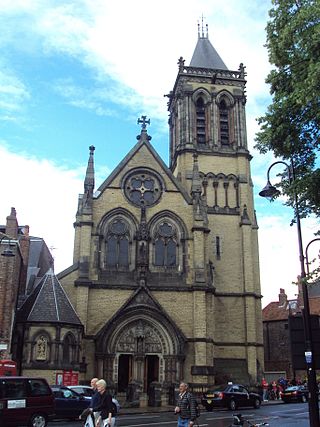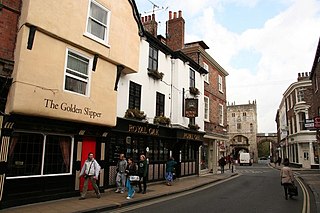
Whitwick is a large village in Leicestershire, England, close to the town of Coalville in the northwest of the county. It lies in an ancient parish which formerly included the equally historic villages of Thringstone and Swannington. It was an important manor in the Middle Ages, which once included Bardon and Markfield, parts of Hugglescote, Donington le Heath, Ratby, Bocheston, Newtown Unthank and Whittington. As early as 1293, Whitwick had a weekly market and a four-day fair. The population of Whitwick, according to the 2001 census was 10,815 persons. 8,092 of these fell into the 16-74 working age range, although only 4,689 were employed. The population of the village at the 2011 census had fallen to 8,612.

The Countess of Huntingdon's Connexion is a small society of evangelical churches, founded in 1783 by Selina Hastings, Countess of Huntingdon, as a result of the Evangelical Revival. For many years it was strongly associated with the Calvinist Methodist movement of George Whitefield.

Eccleshill is an area, former village, and ward within the City of Bradford Metropolitan District Council in the county of West Yorkshire, England. The ward population of Eccleshill is 17,540, increasing at the 2011 Census to 17,945. Eccleshill is a more or less completely residential urban area with very little open space although there is substantial open land directly to the east.

The Oratory Church of Saint Wilfrid, York is a Catholic church in York, England.
York had around 45 parish churches in 1300. Twenty survive, in whole or in part, a number surpassed in England only by Norwich, and 12 are used for worship. This article consists of a list of medieval churches which still exist in whole or in part, and a list of medieval churches which are known to have existed in the past but have been completely demolished.

Goldenhill is an area on the northern edge of Stoke-on-Trent, in Staffordshire, England. It is centred along the High Street, part of the A50 road that runs from south-east to north-west. It is about 1 mile (1.6 km) north of Tunstall and 1.5 miles (2.4 km) south-east of Kidsgrove.

Bethesda Methodist Chapel is a disused Methodist chapel, in Hanley, Staffordshire, England. One of the largest Nonconformist chapels outside London, the building has been known as the "Cathedral of the Potteries", being "one of the largest and most ornate Methodist town chapels surviving in the UK".

Chapel Allerton is an inner suburb of north-east Leeds, West Yorkshire, England, 2 miles (3.2 km) from the city centre.

Burnley, in Lancashire, England, has a long history of religious worship, dating from at least before 1122 in the case of the Church of England. The chapel at Towneley Hall was the centre for Roman Catholic worship in Burnley until modern times. Well before the Industrial Revolution, the town saw the emergence of many non-conformist churches and chapels. In 1891 the town was the location of the meeting which saw the creation of the Baptist Union of Great Britain and Ireland. In the late 19th century a Jewish synagogue was established, and in recent times evangelical and free churches have appeared, as well as a large purpose-built mosque.

Bishophill is an area of central York, in England. It lies within the city walls and has been occupied since at least the Roman period.

King's Square is an open area in the city centre of York, in England. It is popular with tourists, who are often entertained by buskers and street performers. Nikolaus Pevsner notes that "the square has trees, which distinguishes it". The York's Chocolate Story attraction lies on the western side of the square.

Church Street is a street in the city centre of York, in England.

Goodramgate is a street in the city centre of York, in England.

Aldwark is a street in the city centre of York, in England.

Petergate is a street in the city centre of York, in England. It is divided into High Petergate and Low Petergate. The well-known view of the Minster from Low Petergate is described by the City of York Council as "excellent".

Swinegate is a street in the city centre of York, in England.

Minster Yard is a street in the city centre of York, England. It runs along the southern, eastern and northeastern sides of York Minster, for which it is named.

Precentor's Court is an historic street in the English city of York. Although certainly in existence by 1313, the street does not appear on a map until 1610, and it is not given a name until 1722. It was given its current name exactly a century later.

Minster Gates is a north–south running street in the city centre of York, England, connecting Minster Yard and High Petergate. All of its buildings are listed, many dating to the 18th century, although the street is significantly older.



















